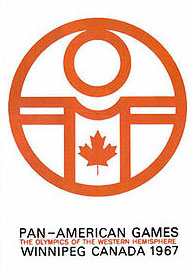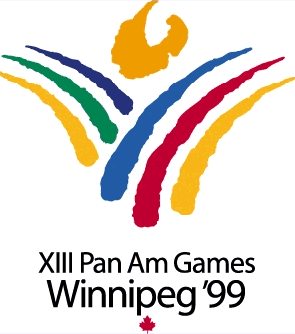Diving Into Our History

The Pan-Am Pool was built for Canada’s first Pan-Am Games that were held in Winnipeg in 1967. In March of that year, based on the unanimous decision of City Council, Winnipeg’s Mayor, Stephen Juba, made an application Canadian Amateur Swimming Association, which later became the Aquatic Federation of Canada, for the Aquatic Hall of Fame and Museum of Canada to be housed in the Pan-Am Pool. Vaughan L. Baird negotiated the application on behalf of the City.
One month later Winnipeg was informed that its application for the Aquatic Hall of Fame had been accepted. It was also to become the home of the National Archives for Aquatic Sports (swimming, diving, water polo and synchronized swimming).
Three years after that, on December 14th, 1970, the Aquatic Hall of Fame and Museum of Canada Inc. (“AHFMC”) obtained letters patent and it is therefore the oldest incorporated Hall of Fame in Canada. The original Directors were Mayor Stephen Juba, Vaughan Lawson Baird, Albert Frederic Ford, and Guy Simonis.
With successful lobbying from Vaughan Baird the VII World Cup of Diving was held at the Pan-Am Pool from May 1st to 5th, 1991 with more entries in diving than at the Los Angeles Olympics. It was the first World Cup of the aquatics to be held in Canada.
The Pan-Am Pool Complex was developed greatly in the ensuing years. In 1994, a new ‘warm up and warm down’ and training pool was added to the east-end. The success and legacy of the 1967 games and the Pan-Am Pool were prime factors in obtaining the Pan Am Games for a second time approximately thirty years later. Between 1997 and 1999, in preparation for Canada’s second Pan Am Games, again to be held in Winnipeg, a western extension was built with new and improved facilities, including increased exercise and training areas, with up-to-date equipment doping rooms, family change rooms, an indoor track, new cafeteria and in the pool, the latest timing and scoreboard system in North America.
In the meantime, the Aquatic Hall of Fame and Museum of Canada’s collection of sports memorabilia and artwork had increased tremendously and larger facilities were required. Vaughan Baird and board member Dr. Robert Thorlakson lobbied for federal funds to construct an addition to the original PanAm pool building that would be a major new entrance and exhibition gallery.

On June 15th, 1997, the AHFMC received a Coat of Arms from the Canadian Heraldic Authority, the first Hall of Fame in Canada to receive this recognition.

The 1999 Pan American Games, officially the XIII Pan American Games or the 13th Pan American Games, was held from July 23-August 8, 1999, in Winnipeg, Manitoba, Canada.
Our Mission
To foster recognition for the aquatic sports of swimming, diving, synchronized swimming and water polo.
Honour the athletes and coaches of these sports who have competed in the Olympic Games, Commonwealth Games, Pan-Am Games and World championships.
Honour deserving individuals who have fostered an appreciation of the aquatic sports, supported the athletes or coaches, or provided great leadership or support to the Canadian Aquatic Hall of Fame.
Provide access to information as it is the home of the National Archives for Aquatic Sports and museum of art, artifacts and memorabilia.
Our Goals
The Canadian Aquatic Hall of Fame gives the people of Canada (and others), an opportunity to learn, remember, and appreciate the sports, the people, and The Royal Gallery Collection through exhibitions, presentations, and inter-active media either on site at our beautiful 3,000 square metre facility attached to the PanAm Aquatic Centre in Winnipeg, Manitoba, or exhibits traveling throughout Canada.

Vaughan Lawson Baird
September 6, 1926 – August 17, 2013
A Pioneer for Canadian Aquatic Sports. Founder, Leader, Historian, and Friend. Without his tireless efforts, the Hall of Fame wouldn’t exist today. Thank you Vaughan for all of your work and inspiration.
